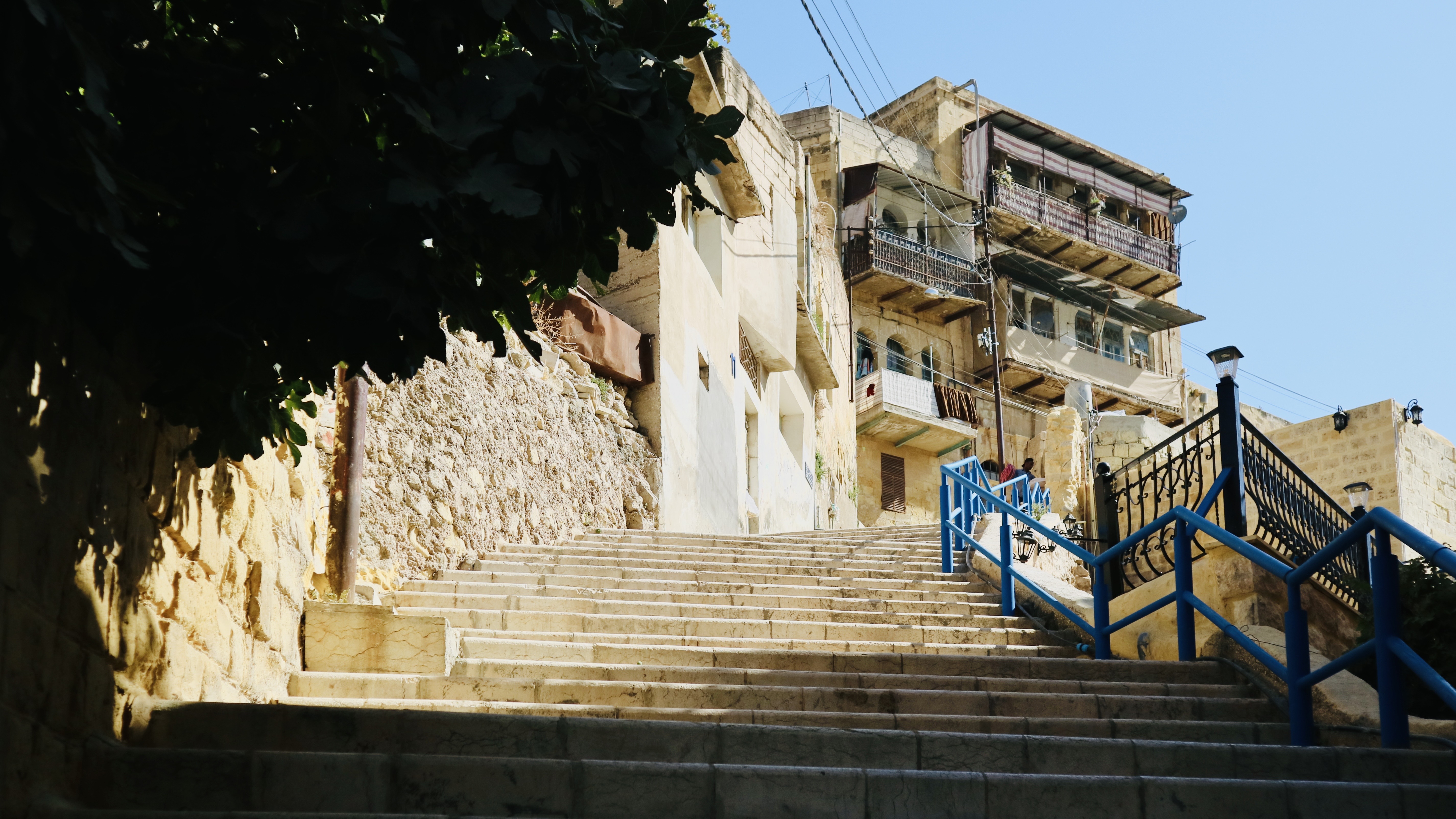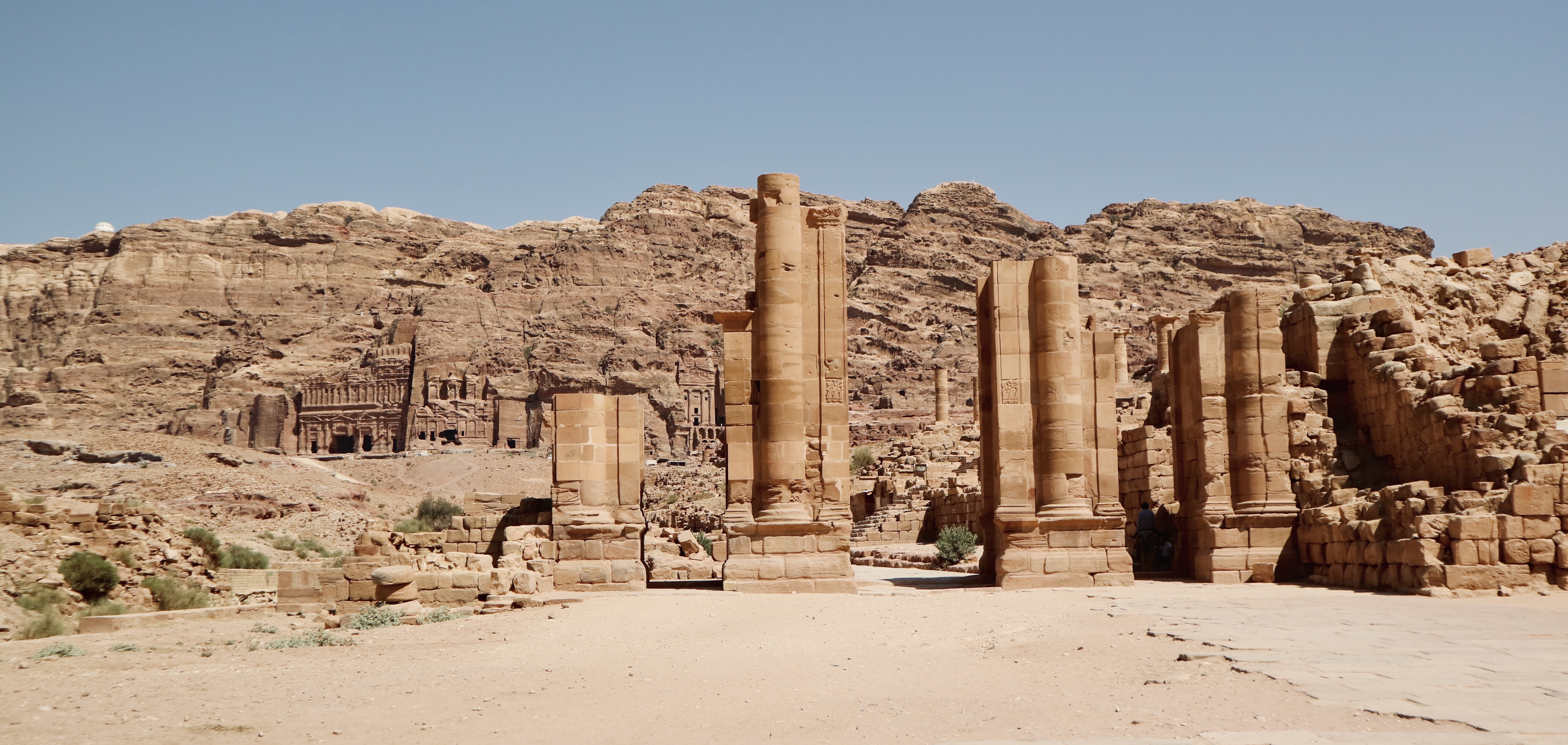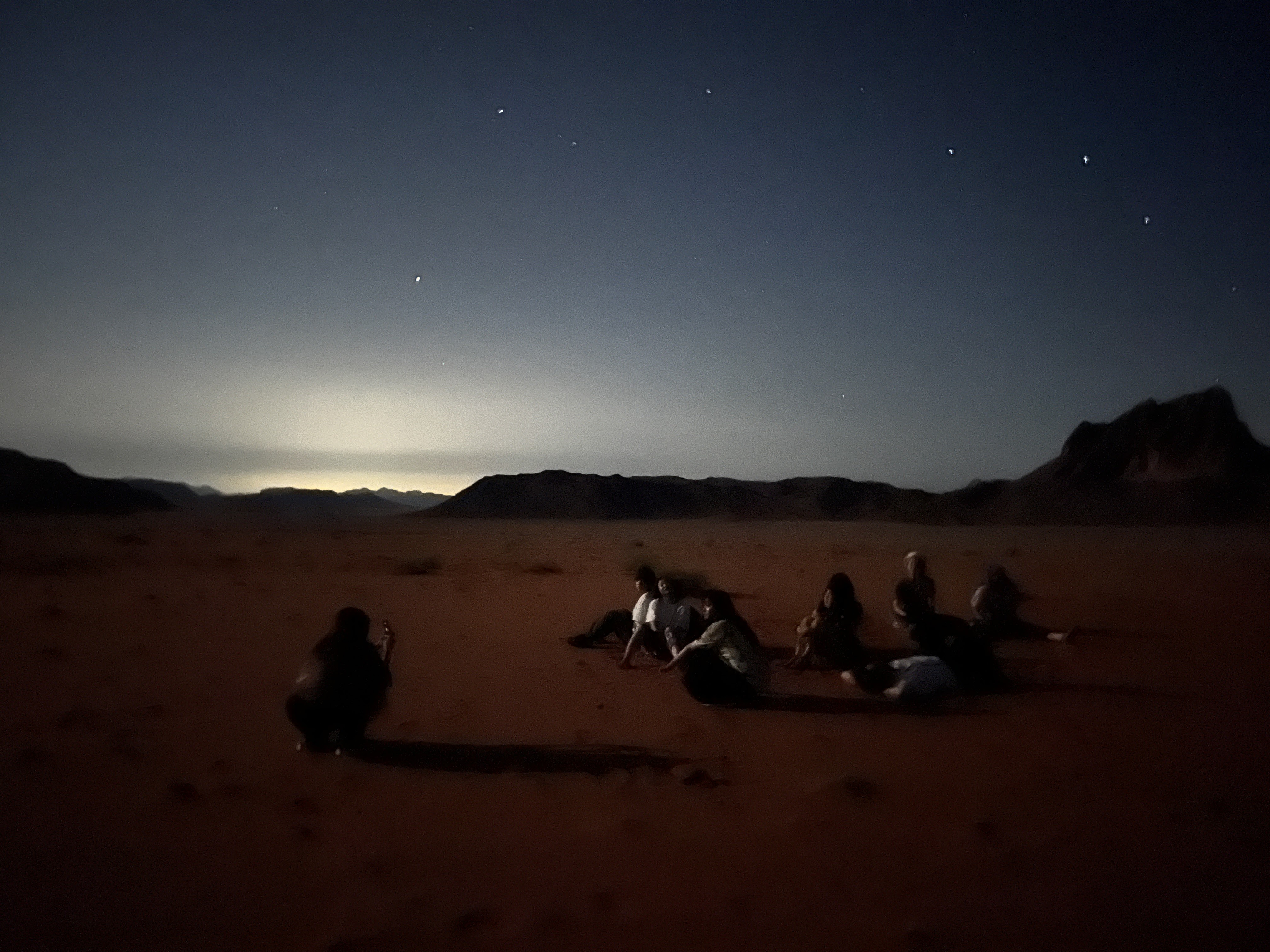中東アジア地方のヨルダン(Jordan)は、古来よりシルクロードなど交易の重要拠点として栄えてきた。また、異なる宗教同士が平和に共存する世界でも珍しい国である。
2023度、本研究室と同大学古谷研究室は、ヨルダン国内の二大学、AlBalqa Applied University(BAU) , AlHussein Technical University(HTU)と共に、8/19〜30の11日間にわたって合同ワークショップを行った。対象敷地はJordan北部のAs-Saltと呼ばれる都市であり、首都Ammanからは車で1時間ほどの場所にある。
Jordanへ渡航する前、日本の学生はAs-Saltの約1.2m四方の敷地模型を用意した。まず、学生らが分担して作成した3Dモデルを元に、地形・建物双方をコンタ形状で作れるようデータを加工した上で、5mm厚MDFをレーザー加工機で切断し製作した。建物コンタは街区ごとに作成し、黄土色の建物が多いAs-Saltに合わせて金色に塗装した。地形は、建物が斜面に収まるよう予めくり抜かれた形状で切断し、嵌め込むことで再現した。形状が複雑且つ必要MDF枚数が膨大だった為、各板材に最密充填されるよう切断用データを敷詰めることで費用を削減した。
先の通り用意した模型を分担し運んだ日本側学生は、Jordanの学生と合流した後、As-Saltのフィールドサーベイを開始した。3つの山が密集した地形に作られたこの街は、建物の大部分が険しい谷に建てられており、街道も殆どが斜面で、多くの階段やスロープが見られる光景はユニークかつ興味深かった。一方で、街に電車やバスなど交通インフラが整備されていない現状では、当然ながら街の上部へ行くほど不便になっていく傾向がある。故に山を登るほど徐々に廃墟が増えていき、少々異様な光景が見られる一角もあった。
このようにAs-Saltを散策し現地住民へのインタビューなども交えた調査の結果、街が抱える問題点や、独自の魅力を洗い出した。大きな問題としては、箱物行政の結果、駐車場を解体して産まれた利用者のいない市民広場と、それに伴う駐車場不足と路上駐車、排水設備の老朽化などだ。
また、かつてこの街にイギリスが敷設した鉄道が撤去された際、線路として使われていたH型鋼が各家のバルコニーの増築に用いられた。伝統的なアラブ式住宅群から、色とりどりに着彩されたH型鋼が突き出す様子は非常に魅力的な光景だった。他にも、アラブ特有の商形態Souq、1日5回礼拝を呼びかけるAdhanなど、特殊な地理条件や気候や宗教が形作る興味深い文化慣習、そしてそれが建築へと影響する様を発見することができた。
As-Salt の調査を行ったのち、三大学の学生を交えた六つの班に分かれ、 問題を解決し、魅力をより発揮するアイデアの提案を行った。作業はBAU、HTU双方で行い、発表はHTUキャンパス内で為された。本ワークショップはヨルダン観光庁・日本大使館・ヨルダンの著名建築家など、様々な団体が関わった大きなプロジェクトであり、制作した敷地模型はヨルダン国立博物館に保存される予定だ。また、この模様はヨルダン国営テレビにて放送された。
最後に、ヨルダンはかの有名なペトラ遺跡や死海、世界で最も火星に近い環境と謳われ様々な英語のロケ地にもなったワディ・ラムなど、優美な自然環境と貴重な古代建築を擁する土地だ。我々も当然これらの名所を探訪し、その威容を肌で体感する貴重な体験を得られた。
Jordan, located in the Middle East Asia region, has flourished since ancient times as an important trading center along the Silk Road and other routes. It is also one of the few countries in the world where different religions coexist peacefully.
In 2023, this laboratory and Furuya Laboratory of the same university conducted a joint workshop with two universities in Jordan, AlBalqa Applied University (BAU) and AlHussein Technical University (HTU), for 11 days from August 19 to 30. The target site is a city called As-Salt in northern Jordan, about an hour’s drive from the capital Amman.
Before traveling to Jordan, the Japanese students prepared a 1.2-meter square model of the As-Salt site. First, based on the 3D model created by the students, the data was processed to create contour shapes for both the topography and the buildings, and then 5mm-thick MDF was cut and fabricated using a laser cutting machine. Building contours were created for each block, and painted gold to match the ochre-colored buildings in As-Salt, which has many ochre-colored buildings. The topography was reproduced by cutting the buildings in a pre-cut shape to fit into the slope and fitting them in. Since the shape was complex and the number of MDF sheets required was huge, the cost was reduced by laying out the data for cutting so that each board would be filled as tightly as possible.
The Japanese students, who had shared and carried the prepared models as described above, met up with Jordan students and started their field survey of As-Salt, a city built on a terrain of three mountains, with most of the buildings built in steep valleys and streets mostly on slopes, with many stairs and ramps. The scenery was unique and interesting. On the other hand, the lack of transportation infrastructure such as trains and buses in the city naturally tends to become more inconvenient as one moves toward the upper parts of the city. Therefore, the higher one goes up the mountain, the more ruins gradually appear, and in some areas, the scenery is a bit bizarre.
As a result of our research, which included walking around As-Salt and interviewing local residents, we identified some of the problems the town faces and its unique charms. One of the major problems is the unused civic plaza, which was created by demolishing a parking lot as a result of a “boxed-in” government, the resulting shortage of parking spaces and street parking, and the aging drainage system.
In addition, when the railroad once laid by the British in this city was removed, the H-shaped steel used as tracks was used for the addition of balconies on each house. It was a fascinating sight to see the colorfully painted H-beams sticking out from the traditional Arab-style houses. Other interesting cultural practices that were shaped by the particular geographical conditions, climate, and religion, such as the Souq, a unique Arab business practice, and Adhan, a call to prayer five times a day, and their influence on the architecture, were also discovered.
After conducting a survey of As-Salt, students from the three universities were divided into six groups to propose ideas for solving the problems and making As-Salt more attractive. The work was conducted at both BAU and HTU, and presentations were made on the HTU campus. The workshop was a major project involving various organizations, including the Jordan Tourism Authority, the Japanese Embassy, and prominent Jordanian architects, and the model of the site will be stored in the Jordan National Museum. The model of the site will be stored in the Jordan National Museum. The workshop was also broadcast on Jordanian national television.
Lastly, Jordan is a land of graceful natural surroundings and precious ancient architecture, including the famous Petra Ruins, the Dead Sea, and Wadi Rum, which is said to be the closest environment to Mars in the world and has been used as a filming location for various English-language movies. We naturally visited these places of interest and had the precious experience of experiencing their majesty firsthand.
【所在地】Jordan As-Salt, Amman, Petra Ruin, Wadi-Rum, Dead Sea
【期間】 2023/8/20~2023/8/30
【協力】
Jordan Tourism Board
Embassy of Japan in Jordan
AlBalqa Applied University
AlHussein Technical University
【メンバー】
江見侑一郎 小原 美春 平岩理子 マータース桃音 前田琴梨 松永貴志 御巫景祐 森奈月 Konstancja Kusiak
古谷研究室有志 AlBalqa Applied University有志 AlHussein Technical University有志













